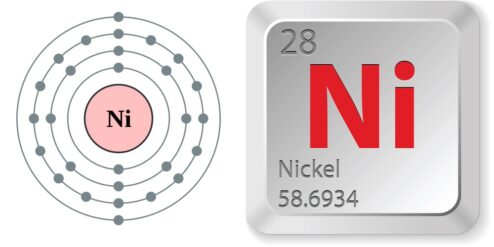Nickel in Vegetables and Dietary Intake
Nickel is a trace mineral that naturally occurs in the environment, including soil and water. It’s absorbed by plants and thus makes its way into our diet. While nickel is not considered an essential nutrient for humans, it is present in many foods we consume daily. The dietary intake of nickel largely depends on the types of food consumed and the nickel concentration in the soil where the food is grown.
Vegetables, in particular, can have high concentrations of nickel, especially if they are grown in nickel-rich soil. This is because plants have the ability to absorb nickel from the soil through their roots. The nickel then accumulates in the plant tissues, eventually ending up in the vegetables we eat.
It’s important to note that the amount of nickel in vegetables can vary greatly depending on various factors. These include the type of vegetable, the soil it was grown in, and how the vegetable is prepared and cooked. For example, canned vegetables often have higher nickel content due to the nickel-plated cans they are stored in.
Understanding Nickel: Its Role in the Human Body
Nickel, though not recognized as an essential nutrient, plays a role in the human body. It is involved in the activation of certain enzymes related to the breakdown or utilization of glucose. Nickel also contributes to the production of red blood cells and helps in maintaining the health of the skin.
However, the human body requires only a very small amount of nickel. The majority of the nickel we consume is excreted by the body, primarily through urine. Only a small percentage is absorbed and utilized.
Nickel can be harmful in large amounts. Some people may also have a nickel allergy, which can cause dermatitis, itching, and other skin problems when they come into contact with nickel. Ingesting foods high in nickel can exacerbate these symptoms.
High Nickel Vegetables: A Comprehensive List
Several vegetables are known to contain high levels of nickel. These include legumes such as lentils, peas, and soybeans. Other vegetables high in nickel include spinach, lettuce, and onions.
Root vegetables like potatoes and carrots can also contain significant amounts of nickel, depending on the nickel content of the soil they were grown in. Similarly, green leafy vegetables like kale and Swiss chard can accumulate nickel if grown in nickel-rich soil.
Risks and Benefits: Consuming High Nickel Vegetables
While consuming vegetables high in nickel can contribute to a higher intake of this mineral, it’s important to remember that nickel is not harmful in small amounts. In fact, it plays a role in certain bodily functions as mentioned earlier.
However, consuming large amounts of nickel can lead to nickel toxicity, which can cause symptoms like nausea, vomiting, and diarrhea. Long-term exposure to high levels of nickel can also lead to more serious health problems like lung and nasal cancer.
Managing Nickel Intake: Tips for a Balanced Diet
To manage your nickel intake, it’s important to maintain a balanced and varied diet. While certain vegetables may be high in nickel, they also provide other important nutrients that are essential for health. Therefore, it’s not advisable to completely eliminate these vegetables from your diet.
Instead, try to consume a variety of vegetables to ensure you’re getting a wide range of nutrients. If you’re concerned about your nickel intake, you can also choose to consume lower-nickel vegetables like cucumbers, tomatoes, and bell peppers.
Making Informed Choices about Nickel in Your Diet
Understanding the nickel content in vegetables can help you make informed dietary choices. While nickel is present in many vegetables, its concentration can vary greatly. Consuming a varied diet can help ensure you’re getting a balance of nutrients while managing your nickel intake. If you have a nickel allergy or sensitivity, it may be beneficial to consult with a healthcare provider or dietitian to develop a diet plan that suits your individual needs.
Per approfondire:
- Nickel in the Human Diet and Its Significance: This research article provides an in-depth look at the role of nickel in the human diet.
- Nickel Allergy: Mayo Clinic provides information on nickel allergy, including symptoms, causes, and treatment.
- Nickel in Foods and the Diet: The Agency for Toxic Substances and Disease Registry provides a comprehensive overview of nickel in foods and the diet.
- Dietary Nickel as a Cause of Systemic Contact Dermatitis: This study explores the link between dietary nickel and systemic contact dermatitis.
- Nickel in Soils: A Review of Its Distribution and Impacts: This research article provides a comprehensive review of nickel in soils and its impacts on plant and human health.


